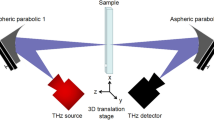Abstract
The floating 3D display system based on Tessar array and directional diffuser screen is proposed. The directional diffuser screen can smoothen the gap of lens array and make the 3D image’s brightness continuous. The optical structure and aberration characteristics of the floating three-dimensional (3D) display system are analyzed. The simulation and experiment are carried out, which show that the 3D image quality becomes more and more deteriorative with the further distance of the image plane and the increasing viewing angle. To suppress the aberrations, the Tessar array is proposed according to the aberration characteristics of the floating 3D display system. A 3840 × 2160 liquid crystal display panel (LCD) with the size of 23.6 inches, a directional diffuser screen and a Tessar array are used to display the final 3D images. The aberrations are reduced and the definition is improved compared with that of the display with a single-lens array. The display depth of more than 20 cm and the viewing angle of more than 45° can be achieved.













Similar content being viewed by others
References
Son, J., Javidi, B., Yano, S., Choi, K.: Recent developments in 3-D imaging technologies. J. Display Technol. 6(10), 394–403 (2010)
Hill, L., Jaccobs, A., “3-D liquid crystal displays and their applications,” in Proceedings of IEEE Conference on Computer Vision and Pattern Recognition: (IEEE, 2006), pp. 575–590
Chang, Y.C., Tang, L.C., Yin, C.Y.: Efficient simulation of intensity profile of light subpixel-matched lenticular lens array for two- and four-view auto-stereoscopic liquid-crystal display. Appl. Opt 52(1), A356-A359 (2013)
Takaki, Y., Nakamura, J.: Generation of 360-degree color three-dimensional images using a small array of high-speed projectors to provide multiple vertical viewpoints. Opt. Express 22(7), 8779–8789 (2014)
Son, J., Saveljev, V., Kim, J., Kwack, K., Kim, S.: Multiview Image acquisition and projection. J. Display Technol 2(4), 359–363 (2006)
Hong, J., Kim, Y., Park, S., Hong, J., Min, S., Lee, S., Lee, B.: 3D/2D convertible-type integral imaging using concave half mirror array. Opt. Express 18(20), 20628–20637 (2010)
Takaki, Y., Nago, N.: Multi-projection of lenticular displays to construct a 256-view super multi-view display. Opt. Express 18(9), 8824–8835 (2010)
Mphepo, W., Huang, Y., Rudquist, P., Shieh, H.: An autostereosocopic 3D display system based on prism patterned projection screen. J. Display Technol 6(3), 94–97 (2010)
Bogaert, L., Meuret, Y., Roelandt, S., Avci, A., Smet, H., Thienpont, H.: Demonstration of a multiview projection display using decentered microlens arrays. Opt. Express 18(25), 26092–26106 (2010)
Son, J., Javidi, B.: Three-dimensional imaging methods based on multiview images. J. Display Techol 1(1), 125–140 (2005)
Yi, S., Chae, H., Lee, S., “Moving parallax barrier design for eye-tracing autostereoscopic displays,” in Proceedings of IEEE Conference on 3DTV: (IEEE, 2008), pp. 165–168
Liou, J., Lee, K., Huang, J.: Low crosstalk multi-view tracking 3-D display of synchro-signal LED scanning backlight system. J. Display Technol 7(8), 411–419 (2011)
Sang, X., Fan, F., Jiang, C., Choi, S., Dou, W., Yu, C., Xu, D.: Demonstration of a large-size real-time full-color three-dimensional display. Opt. Lett. 34(24), 3803–3805 (2009)
Yu, C., Yuan, J., Fan, F., Jiang, C., Choi, S., Sang, X., Lin, C., Xu, D.: The modulation function and realizing method of holographic functional screen. Opt. Express 18(26), 27820–27826 (2010)
Sang, X., Fan, F., Choi, S., Yu, C., Yan, B., Dou, W.: Three-dimensional display based on the holographic functional screen. Opt. Eng. 50(9), 091303 (2011)
Lee, J., Park, J., Nam, D., Choi, S.Y., Park, D., Kim, C.Y.: Optimal projector configuration design for 300-Mpixel multi-projection 3D display. Opt. Express 21(22), 26820–26835 (2013)
Xia, X., Liu, X., Li, H., Zheng, Z., Wang, H., Peng, Y., Shen, W.: A 360-degree floating 3D display based on light field regeneration. Opt. Express 21(9), 11237–11247 (2013)
Lippmann, G.: La photographie integrale. Comptes-Rendus Acad. Sci. 146, 446–451 (1908)
Schwarz, J., Wang, A., Shemer, Z., Zalevsky, Javidi, B.: Lensless three-dimensional integral imaging using variable*** and time multiplexed pinhole array. Opt. Lett. 40(8), 1814–1817 (2015)
Wang, Q., Ji, C., Li, L., Deng, H.: Dual-view integral imaging 3D display by using orthogonal polarizer array and polarization switcher. Opt. Express 24(1), 9–16 (2016)
Jen, T., Shen, X., Yao, G., Huang, Y., Shieh, H.-P.D., Javidi, B.: Dynamic integral imaging display with electrically moving array lenslet technique using liquid crystal lens. Opt. Express 23(14), 18415–18421 (2015)
Zhang, J., Wang, X., Chen, Y., Yu, S., Zhang, Q., Li Z.: Improvement method of integral imaging quality based on an aperture-tunable lens array. Appl. Opt. 53(25), 5654–5659 (2014)
Luo, C., Wang, Q., Deng, H., Gong, X., Li, L., Wang, F.: Depth calculation method of integral imaging based on gaussian beam distribution model. J. Display Technol 8(2), 112–116 (2012)
Luo, C., Xiao, X., Deng, H., Corral, M., Chen, C., Javid, B., Wang, Q.: Analysis of the depth of field of integral imaging displays based on wave optics. Opt. Express 21(25), 31263–31273 (2013)
Yu, X., Sang, X., Gao, X., Chen, Z., Chen, D., Duan, W., Yan, B., Yu, C., Xu, D.: Large viewing angle three-dimensional display with smooth motion parallax and accurate depth cues. Opt. Express 23(20), 25950–25958 (2015)
Karimzadeh A.: Integral imaging system optical design with aberration consideration. Appl. Opt 54(7), 1765–1769 (2015)
Zhang, J., Wang, X., Wu, X., Yang, C., Chen Y.: Wide-view integral imaging using fiber-coupled monocentric lens array. Opt. Express 23(18), 23339–23347 (2015)
Fan, F., Choi, S., Jang, C.: Demonstration of full-parallax three-dimensional holographic display on commercial 4K flat-panel displayer. Chin. Opt. Lett. 14(1), 010007 (2016)
Funding
Supported by BUPT Excellent Ph.D. Students Foundation (CX2016306); Natural National Science Foundation of China (NSFC) (61575025); Program 863 (2015AA015902); the fund of the State Key Laboratory of Information Photonics and Optical Communications.
Author information
Authors and Affiliations
Corresponding authors
Electronic supplementary material
Below is the link to the electronic supplementary material.
Supplementary material 1 (MP4 8989 KB)
Rights and permissions
About this article
Cite this article
Gao, X., Sang, X., Yu, X. et al. Aberration improvement of the floating 3D display system based on Tessar array and directional diffuser screen. Opt Rev 25, 500–508 (2018). https://doi.org/10.1007/s10043-018-0440-5
Received:
Accepted:
Published:
Issue Date:
DOI: https://doi.org/10.1007/s10043-018-0440-5




